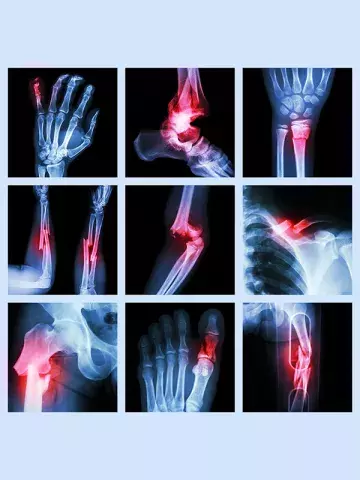‘Skeletal age’: a new metric to assess fragility fracture impact on life expectancy
By Melanie Hinze
Research published in eLife introduces the idea of ‘skeletal age’, as the age of an individual’s skeleton based on the combined risk from a prior fragility fracture and their fracture-associated mortality.
The study authors examined the link between fractures and mortality based on age, gender, fracture site and comorbidities using data from the Danish National Hospital Discharge Register. They then estimated the ‘skeletal age’ – defined as the sum of the chronological age of a patient and estimated life lost following a fracture – for each age and fracture site stratified by gender.
The study population comprised 793,815 men with a mean age of 63.9 years and 873,524 women with a mean age of 65.5 years as of 1 January, 2001.
During a median follow up of 14 years, 95,372 men and 212,498 women sustained a fracture, equating to an incidence of 10.9 fractures per 1000 person-years in men and 23.2 fractures per 1000 person-years in women.
The unadjusted rate of mortality among patients with a fracture was 6.54 per 100 person-years for men and 5.42 per 100 person-years for women, compared with 2.56 per 100 person-years in those without a fracture.
The authors found that one fracture was associated with one to seven years of life lost, with greater loss occurring in men. Hip fracture was associated with the greatest loss of life years, and men and women with a fracture at the hip, pelvis or vertebra had a greater risk of mortality than those with other fractures.
Study coauthor, Dr Tuan Nguyen, a Leadership Fellow of the National Health and Medical Research Council and Distinguished Professor of Predictive Medicine at the School of Biomedical Engineering, University of Technology Sydney (UTS), Sydney, said that it was not widely appreciated that an osteoporotic fracture was associated with a reduced life expectancy, nor that this impact was greater in men than women.
‘Our work shows that people diagnosed with osteoporosis, even without a history of fractures, still encounter a significant reduction in their lifespan compared to those without the condition,’ he said. ‘This decrease in life expectancy is in addition to any pre-existing chronic illnesses they may have,’ he added.
Dr Nguyen, who is also Director of the Centre for Health Technologies and Theme Lead of UTS Ageing Research Collaborative, told Medicine Today that osteoporosis serves as an indicator that our bones have aged beyond our chronological age, and the concept of ‘skeletal age’ offers a quantifiable measure to assess the ageing process of our skeletal system.
Dr Nguyen and colleagues have developed a digital tool called BONEcheck (bonecheck.org) that enables the estimation of an individual’s skeletal age.
‘This innovative tool facilitates informed discussions between doctors and patients regarding the treatment and prevention of fractures,’ Dr Nguyen added.
eLife 2023; 12: e83888; doi: https://doi.org/10.7554/eLife.83888.


